- Home
- Kim Newman
Gaslight Arcanum: Uncanny Tales of Sherlock Holmes
Gaslight Arcanum: Uncanny Tales of Sherlock Holmes Read online
Illustration by Mike Mignola
Gaslight Arcanum
Uncanny Tales of Sherlock Holmes
Edited by
J.R. Campbell & Charles Prepolec
E-Book Edition
Published by
EDGE Science Fiction and
Fantasy Publishing
An Imprint of
HADES PUBLICATIONS, INC.
CALGARY
Notice
This ebook is licensed for your personal enjoyment only. It may not be re-sold or given away to other people. If you would like to share this book with another person, please purchase an additional copy for each reader. If you’re reading this book and did not purchase it, or it was not purchased for your use only, then please purchase your own copy. Thank you for respecting the hard work of the author(s).
* * * * *
This book is also available in print
* * * * *
I Hear of Sherlock Everywhere…
by Charles Prepolec
Welcome to Gaslight Arcanum: Uncanny Tales of Sherlock Holmes, the third in our series of anthologies to pitch Sherlock Holmes into weird and supernatural stories. Yes, that’s right; third. The book you now hold in your hands follows Gaslight Grimoire: Fantastic Tales of Sherlock Holmes (2008 EDGE Science Fiction and Fantasy Publishing) and Gaslight Grotesque: Nightmare Tales of Sherlock Holmes (2009 EDGE Science Fiction and Fantasy Publishing). Let me tell you a little story about how we got to this point….
It was twenty years ago today, Sgt. Pepper taught the band to play … okay, maybe not, but time flies when you’re having fun, and I’ve definitely been having fun with Sherlock Holmes over the last few years. It was 2006 when my co-editor Jeff Campbell and I first set out to plunge that most rational of detectives, Sherlock Holmes, into the murky realms of supernatural, or weird fiction. At that point it had been three years since we had edited our small press anthologies of traditional Sherlock Holmes pastiche — Curious Incidents: Volumes 1 & 2 — and we were looking to do something else, something new, something different, maybe something a bit ‘out there’ with the character. Most of all we wanted to do something that would be fun — fun for us to put together, but more importantly, fun for our readers. It set me to thinking about exactly which Sherlock Holmes stories, by authors other than Arthur Conan Doyle, had given me the most pleasure over the years. Which were the most memorable or had left some strong impression on me? Which ones made me smile when I first read them? Given my lifelong enthusiasm for horror fiction, comic books and pulp tales, it should come as no surprise that my list was populated with books and stories that referenced these interests.
Fred Saberhagen’s The Holmes-Dracula File and Séance For A Vampire, Loren D. Estleman’s Dr. Jekyll and Mr. Holmes, Manly Wade Wellman and Wade Wellman’s Sherlock Holmes’s War of the Worlds, Martin Powell’s Scarlet in Gaslight, Phil Farmer’s The Adventure of the Peerless Peer, Cay Van Ash’s Ten Years Beyond Baker Street, Michael Dibdin’s The Last Sherlock Holmes Story, P. H. Cannon’s Pulptime, Mark Frost’s The List of Seven and The Six Messiahs, Ralph Vaughan’s Sherlock Holmes in the Adventure of the Ancient Gods, Sam Siciliano’s The Angel of the Opera, Kim Newman’s Anno Dracula and Diogenes Club stories, Reaves and Pelan’s Shadows Over Baker Street, etc. … are the books, comics and journals that have left a lasting impression on me and colored my view of what I enjoy the most in Sherlock Holmes stories. Some are mash-ups with other characters, some are pulpy adventure, some are science fictional, and some are just outright horror stories, but all of them take Holmes beyond the confines of straight mystery stories, or slavish pastiche, and have some fun with the character.
Of course there were also various other factors that influenced our decision to take Holmes down the supernatural road. There seemed to be something in the air at the time, maybe a premonition, maybe an educated guess that the time for Holmes and horror was at hand. Magic and the supernatural seemed to be on the upswing in popular culture with the likes of J. K. Rowling’s Harry Potter and Mike Mignola’s Hellboy making it to the silver screen. Speaking of Mike Mignola, I’d be remiss if I didn’t mention that a Batman story written by Mike, for DC’s Elseworlds line in 2000 — Batman: The Hell That Came to Gotham — was a direct influence, to say nothing of the Hellboy: Odd Jobs prose anthologies edited by Christopher Golden. The former showed me that you could pitch an established detective character into a supernatural world without missing a beat and the latter practically served as a template for the sort of book we set out to produce in terms of both style and approach. We wanted to bring in writers who could work effectively with Conan Doyle’s creation in much the same way Christopher Golden had successfully brought in writers to work with Mike Mignola’s Hellboy. In short, we wanted folks who were fans of Sherlock Holmes who would take the character beyond the realm of simple pastiche. After a bit of thought Jeff and I put together a list of writers we thought would fit and deliver the sort of stories we were after. Some we’d worked with on Curious Incidents, others we’d admired for some time, and others still were friends and acquaintances within either the Sherlockian or fantastic fiction communities. In any event we were thrilled with the response and were delighted to have stories from Barbara Hambly, Kim Newman, Martin Powell, Barbara Roden, Chris Roberson and all the other talented writers we pulled together for our first Holmes/horror anthology. Rounding out the text was a fine foreword from noted Sherlockian, writer and my former editor at Sherlock magazine, David Stuart Davies. For the icing on the cake we commissioned an atmospheric cover by artist Timothy Lantz and interior illustrations from the amazing Australian Sherlockian Phil Cornell. We had our first book!
The question then became who would publish it? Happily, by the time we pitched the concept to Calgary-based publisher Brian Hades, of EDGE Science Fiction and Fantasy Publishing in 2007, a few other factors had come into play that would add to our project’s appeal. First off, a Sherlock Holmes film was announced as being in-development by Warner Bros, which would bring Sherlock Holmes back into the pop culture limelight, a place from which he’d largely been absent since the Sherlock Holmes boom of the late 1980s. Secondly, Calgary had won the bid to host the 2008 World Fantasy Convention. The theme for the convention was “Mystery in Fantasy and Horror” with one of our writers, Barbara Hambly, as guest of honour. The logo for the convention featured a dragon wearing a deerstalker hat. If you want to talk about a perfect fit, it doesn’t get much better than that! Serendipity is a wonderful thing. So we had a concept, writers, a publisher, a target date for publication and a great venue for a release. Finally, in October of 2008, Gaslight Grimoire: Fantastic Tales of Sherlock Holmes hit bookstores around the globe … selling out its initial printing in under seven weeks. The book went on to garner some fine reviews, was short-listed for an Aurora Award and released in an Italian translation (Il Grimorio di Baker Street) by Gargoyle Books in 2010. Two of the stories — Barbara Roden’s The Things That Shall Come Upon Them and Chris Roberson’s Merridew of Abominable Memory — were picked up for John Joseph Adams’ reprint anthology The Improbable Adventures of Sherlock Holmes alongside stories by Stephen King and Neil Gaiman. Not too bad for our first effort!
Needless to say we immediately began work on a follow-up, practically commissioning stories on the spot, over pints of Guinness, from writers Stephen Volk, Mark Morris, Lawrence C. Connolly, Barbara Roden and Simon K. Unsworth, at the launch during WFC 2008. Within a few months we al
so added stories from William Meikle, Neil Jackson, Leigh Blackmore, James A. Moore, Hayden Trenholm, William Patrick Maynard and of course my co-editor Jeff Campbell. Add in another cover from Timothy Lantz, a beautiful Hammer Horror-inspired frontispiece by comic book artist Neil Vokes, a foreword from Leslie Klinger and at WFC San Diego in October 2009 we unleashed Gaslight Grotesque: Nightmare Tales of Sherlock Holmes into the world.
All of which brings us more or less up to date and leads directly to the genesis of Gaslight Arcanum: Uncanny Tales of Sherlock Holmes.
If you’ve ever wondered what might have set Sherlock Holmes on the path to becoming a detective, then you’re going to love our opening story from BAFTA winning screenwriter Stephen Volk. The Comfort of the Seine is a haunting tale of sorrow, wherein a young Sherlock Holmes takes a trip to Paris and finds an all too brief and unexpected romance that leads not only to poetic heartbreak, but also places him in the path of a mysterious and career-defining mentor.
In The Adventure of Lucifer’s Footprints Bryant and May author Christopher Fowler weaves a tight tale of military betrayal where the galloping ghosts of the wrongful dead come thundering out of a storm to seek their vengeance.
A ghastly grimoire, written in the blood of a madman, is stolen from the monks who have guarded its secrets for centuries. To stop a string of terrible and inexplicable murders they turn to Sherlock Holmes, but can even the Great Detective withstand the pull of these cursed pages? Find out in The Deadly Sin of Sherlock Holmes by Tom English.
The influence of H. P. Lovecraft rears its head and the odd tentacle in William Meikle’s The Color That Came to Chiswick — a pulpy tale of cosmic angst, alien invasion and beer. I can assure you that you’ll never look at a St. Paddy’s day pint in quite the same way after reading this one.
World Fantasy Award nominated writer Simon K. Unsworth returns to our pages with a classic country house mystery that is anything but cosy and traditional. There is terror afoot when we learn the secrets of the aged beekeeper in A Country Death.
The late Fred Saberhagen was, as mentioned earlier, one of the writers whose work influenced the direction of our Gaslight series, but due to his illness we never had the opportunity to commission a story from him for Gaslight Grimoire. He passed away in 2007. While we make a point of only publishing original pieces, as a tribute to Fred Saberhagen we’re very pleased to be able to reprint a short story of his, From the Tree of Time, wherein a certain Transylvanian Count comes to the aide of Sherlock Holmes.
One of the great perks of editing this series is that I get to work with authors whose books and short stories I’ve read and admired for many years. Yes, no question, I’m an overgrown fanboy and I’m not above abusing my position to squeeze more stories from some of my favorite writers. Gaslight Grimoire allowed me to work with Kim Newman, Barbara Hambly and Martin Powell. In Gaslight Grotesque I was able to work on stories by Stephen Volk, Mark Morris and James A. Moore. For this present volume I had the great pleasure of working with another of my heroes, Simon Clark. A ghostly voice, from a man long dead, rises along a telephone wire from the ocean floor in Sherlock Holmes and the Diving Bell.
I’m pleased to bring back the multi-talented (you should hear him play guitar and sing) Lawrence C. Connolly for another go-round with Sherlock Holmes. In The Executioner we finally learn the truth of how Sherlock Holmes managed to rise from his apparent death at the Reichenbach Falls.
Calgary writer Kevin Cockle’s Sherlock Holmes and the Great Game gives us a Sherlock Holmes who is not at all what one might expect from Watson’s reports. At times reminiscent of Hammer Films’ The Lost Continent the story is a rollicking and mystical adventure of Aztecs in the Arctic.
Paul Kane pits Sherlock Holmes against the most implacable foe ever faced by man and forces him to unravel The Greatest Mystery. Eliminating the impossible is definitely not an option in this story.
Vegas, baby, yeah! Tony Richards takes us to that Mecca of lost souls in this 21st century tale of the immortal Sherlock Holmes. Bodies drained of blood turn up in the desert and Holmes must venture into The House of Blood to find out why.
Our final entry has Kim Newman returning to the Gaslight series with another fine and fun novella in his ongoing series of Moriarty and Moran stories. The rascally Moran learns firsthand the price of obsession in The Adventure of the Six Maledictions when the Professor assembles a collection of not-so-desirable trinkets … and their owners come calling.
There you go, dear reader, twelve uncanny tales drawn around Sherlock Holmes and his weird world. I had a hell of a lot of fun bringing together these stories and hope you have as much enjoyment in reading them.
While the notion of combining Holmes and the supernatural seemed a might bit odd back in 2006, it appears to have caught on, as I write this in 2010. The big-screen film Sherlock Holmes (2009)had Holmes investigating an occult conspiracy, a cash-in film from The Asylum had him facing robotic dinosaurs and a villainous steampunk Iron Man, Wildstorm comics had Holmes saving London from a zombie apocalypse, and the follow-up series pits him against Dracula. A television series placing Holmes in modern-day London has been released, to great acclaim, by the BBC, and various other ‘fantastic’ projects keep coming. The wheel turns and Sherlock Holmes is once more enjoying a boom. Enjoy it folks, but remember who sent you!
Cheers,
Charles Prepolec
The Comfort of the Seine
by Stephen Volk
My Dear Lestrade,
It is not a huge deductive leap to know you are at this moment wondering why, upon my recent death, this document is presented into your hands, and not those of my friend and chronicler Dr. Watson. The truth is, I cannot bear the thought that he might construe my privacy on these matters for so many years as something of a betrayal.
After you have read it, please place the enclosed securely in the files of the Black Museum at Scotland Yard. The reason for my not wanting this “adventure” to come to public attention in my lifetime will become clear in the reading of it.
But now, as the evening light is fading, I feel a heavy debt not to depart carrying an unwritten chapter of history to my grave, and if my arthritic hand will hold this pen long enough, I shall put the record to right.
Read on, detective. For what could be of more peculiar interest than the solution to a mystery where it seemed no mystery existed?
—Holmes
Youth is a country visited fleetingly, at the time with the only intention of reaching another destination, but in which we later wish we had lingered longer, whilst our energy was boundless and our eyesight good, and the colors of the world less grey and circumscribed. One ventures near cliff edges. One climbs branches, unable to conceive that they can snap. And one leaves one’s home country on a whim, feeling no more than a sleeve tugged urgently by an eager and fresh-faced friend. Thus, at the age of twenty, I found myself abandoning my studies in chemistry, zoology and botany at Sydney Sussex, Cambridge, to accompany the Scales brothers to Paris.
A fellow science student with whom I shared digs, Peter Scales, had coerced me to tag along with him and his sibling, Olaf, a young painter. They were twins, but beyond the superficial similarities — identicalities — the lads could not have been more dissimilar in terms of personality. Olaf wore an overcoat like a Prussian cavalry officer, tartan waistcoats and extravagant facial hair. Peter on the other hand was quite happy to be the wallpaper in a room. But it was fun to see the pranks they played, teasing the passengers on the cross-channel steamer, being seemingly in two places at once, doffing their hats first inside the cabin, then on deck, as if a single person had been transported by magic from the first location to the second. We laughed. Yes, I laughed not infrequently in those days.
Our journey had been prompted when Olaf heard that Renoir, Monet and Degas were exhibiting in the studio of the photographer Nadar. This was the very birth of the era of “Impressionism”, you understand — when the word was first used by the critic Louis Leroy to
ridicule Monet’s Impression, Sunrise, thereby accidentally naming a movement. “Come on Yorkie!” cried Olaf (I still had quite a pronounced accent from the land of my forebears in those days). “It’ll be tremendous! The colors. You have no idea. These painters will be world-famous one day, mark my word. They’ll be hanging in museums!” I was by no means certain of that, and had little or no interest in art, but his enthusiasm was infectious. How could I refuse? England had become a bore. Disraeli was Prime Minister at the age of seventy. And we were young.
The other ulterior motive was, frankly: I spoke French. Not well, but enough. I’d learned it at my great-uncle’s knee, and though I had hardly any memory of him, the old je suis ran in my blood. Peter even quipped I had a nose like a Frenchman.
So, whilst the brothers sought out paintings that captured the fall of light, I was content to observe the fall of light itself on the architecture of the great city around me, and the atmosphere of boulevards once trodden by revolutionary feet, walls that still echoed with the Communards’ bullets and the cries of shop-keepers taken to arms, shockingly, within all-too recent memory. It was hard to believe: the streets I saw before me were regimented, grand, beautiful, populated by civilised and polite citizens of the modern day, yet behind that beauty lurked a spirit quick to anger and pitiless in its violence.
Having explored the Conciergerie, the grisly staging-post before the guillotine, I found myself walking along the Quai de la Corse with the intention of crossing the Pont Notre Dame to delve into Les Halles, the so-called “belly of Paris”, when I heard a female voice behind me:
“Monsieur!”
Instinctively I turned, and to my surprise the unmistakable scent of lilies hit my nostrils. Indeed, a lily itself was being thrust towards me. Equally instinctively, I pushed it aside, glimpsing the vagabond creature in rags and bonnet trying to force it upon me.

 The Bloody Red Baron
The Bloody Red Baron Anno Dracula
Anno Dracula Dracula Cha Cha Cha
Dracula Cha Cha Cha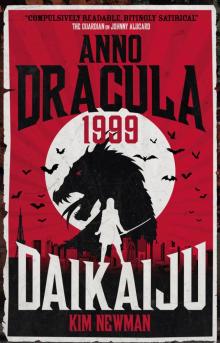 Anno Dracula 1999
Anno Dracula 1999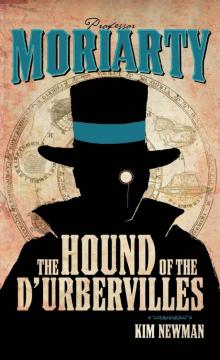 Moriarty: The Hound of the D'Urbervilles
Moriarty: The Hound of the D'Urbervilles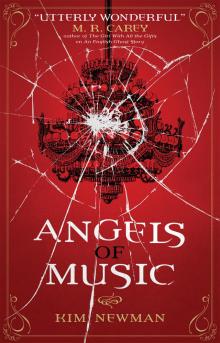 Angels of Music
Angels of Music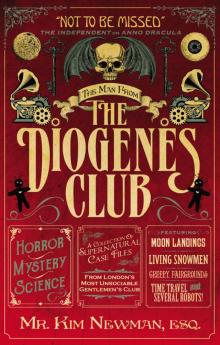 The Man From the Diogenes Club
The Man From the Diogenes Club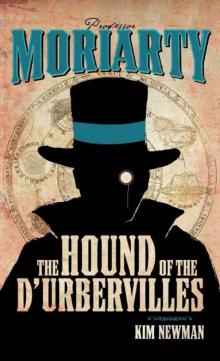 Professor Moriarty: The Hound Of The D’urbervilles
Professor Moriarty: The Hound Of The D’urbervilles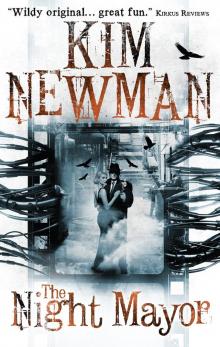 The Night Mayor
The Night Mayor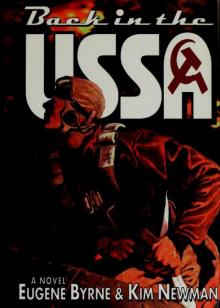 Back in the USSA
Back in the USSA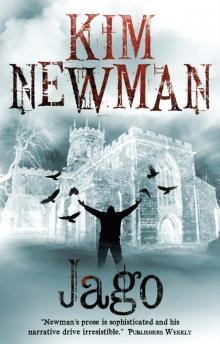 Jago
Jago Gaslight Arcanum: Uncanny Tales of Sherlock Holmes
Gaslight Arcanum: Uncanny Tales of Sherlock Holmes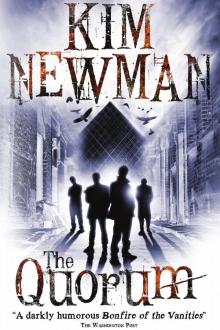 The Quorum
The Quorum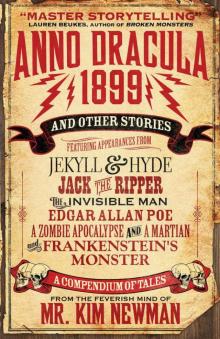 Anno Dracula 1899 and Other Stories
Anno Dracula 1899 and Other Stories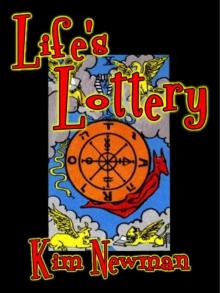 Life's Lottery
Life's Lottery The Secrets of Drearcliff Grange School
The Secrets of Drearcliff Grange School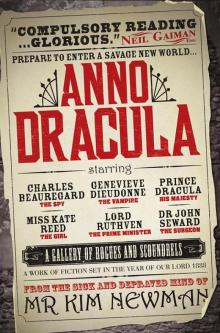 Anno Dracula ad-1
Anno Dracula ad-1 The Bloody Red Baron: 1918 ad-2
The Bloody Red Baron: 1918 ad-2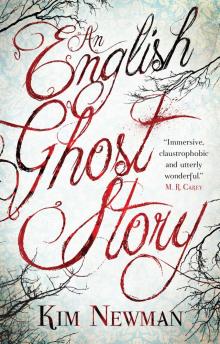 An English Ghost Story
An English Ghost Story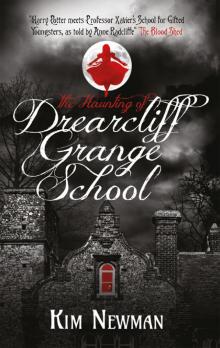 The Haunting of Drearcliff Grange School
The Haunting of Drearcliff Grange School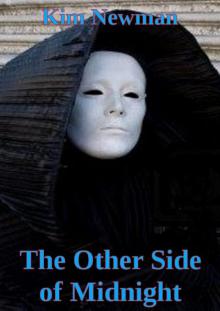 The Other Side of Midnight
The Other Side of Midnight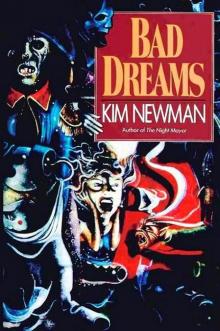 Bad Dreams
Bad Dreams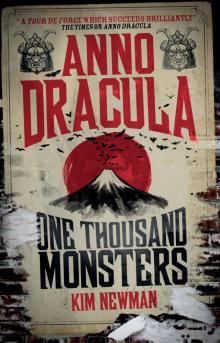 Anno Dracula--One Thousand Monsters
Anno Dracula--One Thousand Monsters The Hound Of The D’urbervilles
The Hound Of The D’urbervilles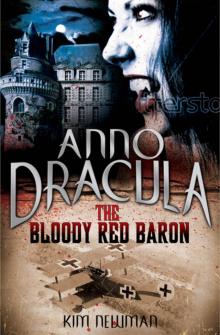 The Bloody Red Baron: Anno Dracula 1918
The Bloody Red Baron: Anno Dracula 1918